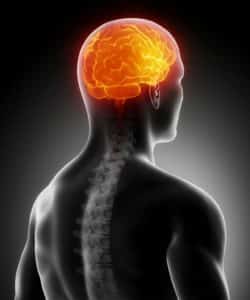
Related: Back Injuries After An Accident
How an MRI works
The magnetic field forces hydrogen atoms in the body to line up in a certain way (similar to how the needle on a compass moves when you hold it near a magnet). When radio waves are sent toward the lined-up hydrogen atoms, they bounce back and a computer records the signal. Different types of tissues send back different signals. For example, healthy tissue sends back a slightly different signal than cancerous tissue. Single MRI images are called slices. The images can be stored on a computer or printed on film. The width of the slice can affect the quality of the image produced.
Finding injuries
An MRI can easily be performed through clothing. However, because the magnet is very strong, certain types of metal can cause significant errors, called artifacts, in the images. MRI’s have been regarded as a highly effective way to get information on internal issues in the body. They have been used for years as evidence of injuries caused by an auto accident. The most common injury from a car accident found would be a bulging or herniated disc.
Related: What Is A Bulging Disk?
MRI errors
The accuracy of the MRI may not be as fool proof as we have been lead to believe. An MRI reading may indicate that there is not a problem, a negative MRI, but in actuality there is a problem that is not detected. Jim Glanz with The New York Times reported that he had an MRI after a fall and the scan showed nothing except bulging disks. He was told that bulging disks were normal to people in his age group. He was instructed to do neck exercises. Glanz followed the exercise regime and eventually felt better. A year later, he fell again and suffered the same symptoms but they were more painful and debilitating. The symptoms didn’t get better so he had another MRI. This time it showed a nerve impingement that was diagnosed as serious enough to cause paralysis if he did not have surgery to widen four to five vertebrae and free the trapped nerves.
Why do these errors happen?
There are many explanations as to why scans can render such diverse results. MRI’s are performed by radiology centers which then send the reports to the doctors. Doctors can never be sure if the MRI was done well, interpreted well or if the machine being used is the most current available. Also, the manner that the scan was performed can affect the results. If the width of the picture slice is too wide it might be hard to read. Some companies don’t even take an MRI of the entire spine if a cervical, lumbar or thoracic MRI is ordered. They set gaps between the slices. This cuts down on the time required to complete the MRI, but it also creates inaccuracies since there are no images of the gaps. If the disc herniation falls within the gap, there would be no image of it. The thought is that more MRI’s can be scheduled by reducing the time required for each MRI. This means more profit for the testing facility and inaccurate test results for the patient.
Related: Can MRIs Hurt Your Kentucky Accident Case?
How can you avoid this?
Some questions to ask before having a MRI is whether the radiology center is accredited by the American College of Radiology. Ask for details of the machine being used and be aware of what the latest machines are capable of showing. Also ask what settings are used on the machine and if there are any gaps. Lastly, ask who is going to be reading your scan. Make sure it is someone who reads MRIs of that particular area. If you are having an MRI on your chest and a person who reads musculoskeletal images daily reads your chest scan, they may miss something that a person who reads chest scans daily may catch.
Even if you do all of the research and are comfortable with the radiology center, you can still experience negative results. If this happens, please get a second opinion. Pain is one of the ways our body tells us something is not right. What our body is telling us is usually the most accurate indication of issues.


